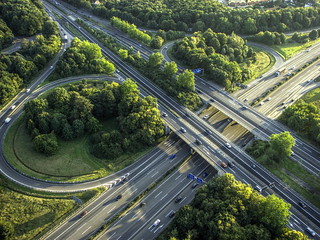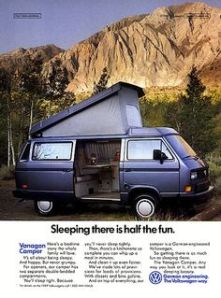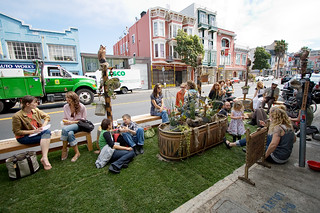Rarely have there been so many meanings so definitively associated with the same colour.
From the innocence of childhood to the sexy, all-night glow of Las Vegas neon, pink has a colourful and controversial history associated with noble and common, demure and gaudy, masculine and feminine. And it wasn’t even known as “pink” (in English) until the late 1600s, centuries after its purported opposite — blue — really arrived on the scene, both linguistically and in the popular consciousness.
Some have argued that pink’s “golden” age was in the eighteenth century, when it was the mode for high-fashion ladies of the French court. At that time, of course, they were among the only people who could afford the expensive dyes that coloured the fabrics they wore. Madame de Pompadour, mistress to King Louis XV, popularized pink amid a bevy of other pastels that were favoured in the Rococo period.
Pink continued to be associated with the rich and royal until the twentieth century, when chemical dyes allowed for its more widespread use in clothing that could be washed repeatedly without the colour fading or washing out. It was also around this time that pink transitioned from being largely a pastel hue associated with the innocence of children to a more bold, exotic shade. The new dyes allowed for the creation of deeper and darker versions of pink that spread around the world in the fashions of the 1920s.
The new and the neon
Buildings started to be sheathed in rose around the same time. In the 1920s and 30s, at the height of the Art Deco movement, vivid colours emerged as an alternative to the drab sameness and deprivation of depression-era interiors. A splash of bright paint could change the tone of a whole room. And with a focus on modern, technologically-enabled streamlining of form, the architecture and products of this age contrasted both with the ornate and intricate styles from earlier in the century and the contemporary countertrends of European functional Mies Van der Rohe-style block modernism.

Pink on pink at the Hotel De Anza, a classic example of Art Deco in San Jose, California
Art Deco was colourful and accessible — and immensely popular. This was particularly the case in America, where, as architectural historian Robert M. Craig puts it,“Art Deco was jazzy, bright, sexy, loud, and visually appealing.” It was everywhere: from department stores to movie theatres to the new motels that had sprung up all over the country to provide for a growing motoring class.
Pink walls and pink fashions were a way to stand out and be noticed, and thus the colour was increasingly used in advertising, from splashy storefronts to the neon signs that dominated the landscape starting in the 1920s. In this way pink came to be associated with both the egalitarianism of commerce and material things: stylish perfume bottles, vacation homes in South Beach, new living room walls. Marilyn Monroe wore a notorious pink dress on the cover of the 1953 film Gentlemen Prefer Blondes. Elvis’s famous pink convertible, purchased in 1955, was seen as the height of post-war luxury and is featured at Graceland.

Gentlemen Prefer Blondes (in pink) — Marilyn Monroe in the 1953 movie poster.
Flight of the pink flamingos
Pink is everywhere in California, as it is in many places where there are beaches, single-story construction, and a touch of the exotic. It is the colour of soft sunsets (because of Rayleigh scattering, in which only the longer rays on the visual spectrum, in the red-yellow colour range, reach the eye), and flowering plants. And in its heyday in 1950s, it represented the triumph of modernism and new frontiers.
Then its meaning shifted again. From being the bright colour of the future, it became the gaudy holdover from a bygone age. The lights of Las Vegas started to look a bit too commercial, too fake. Pink houses now stand out, “island[s] of whimsy in a sea of drab conformity,” and as such aren’t always viewed positively by the neighbours. Gradually pink started to represent the Miami Vice-like excesses of the 1980s or the wastefulness of neon tube lighting, first patented almost 100 years ago.
Nothing symbolizes the pink backlash more than the popular conception of lawn flamingos. Elegant and exotic, flamingos can be found across the globe in warm and wet areas, from India to Chile. The first pink lawn ornament was created in 1957 and was a smash hit. But by the late 1960s, the negative image of the plastics industry and the “unnatural” look of giant pink birds on the lawn led to a spiralling decline in their popularity. Now, of course, they are popular again, an ironic wink and nod to the kitsch of an earlier time.
Gentlemen prefer … pink?
This was not, however, the greatest reversal in the popular perception of pink. It is perhaps surprising today to imagine that pink was for most of its history considered a very masculine colour. Contrasted (as it always is) with blue, pink was seen as more stimulating and active, appropriate for clothing young boys, and the soft daintiness of blue more appropriate for clothing young girls (think: Cinderella’s dress at the ball). It remains a symbol of strength to this day in Japan, where it is associated with cherry blossoms, said to represent fallen warriors.
In nineteenth-century Britain, when military might was shown with red uniforms, boys wore pink as a kind of lesser red. And let’s not forget that the standard map of the British Empire is coloured pink, symbolizing the strength and breadth of British power, from the Cape to Cairo, and Whitehorse to Wellington. The old pink maps cemented the idea of empire in the popular consciousness of the time, creating what Linda Colley, (my favourite) scholar of the British Empire, has termed “a sense of absolutely uncomplicated, uncompromising power.”
Pink now, of course, is considered near-exclusively feminine. It is often used idiomatically to refer to women’s or gay rights issues, as in “pink-collar” work, or “the pink economy.” And it has been helped in this image by marketers for almost seventy years, who both helped to shape tastes in colour and hew to common perceptions of them. Pink was a target during the 1970s with the feminist backlash against the confines of gendered clothing. As women started to dress in a more unisex and stereotypically masculine way, pink was eschewed. As an interesting overview in the Smithsonian notes, there was a time in that decade when even major retailers such as Sears Roebuck didn’t sell pink baby clothes, for girls or boys.
Living in a material world
The shift toward the ownership of colour could be said to have begun with the Pantone Institute’s codification of colours for matching purposes in the late 1950s. In recent colour analyses of brands, pink is considered warm, sensitive and nurturing, commonly used in products or campaigns targeted at women, such as Cosmopolitan and Victoria’s Secret. And that most enduring lightning rod of femininity, Barbie, naturally has her own shade. Barbie pink (Pantone 219C) has been associated with everything Barbie from the very beginning, including a fuzzy pink bathroom scale released in 1965 that was permanently (and controversially) set to 110 lbs.

Love in pink. Photo courtesy of Flickr user Chris Goldberg.
And yet pink remains an aspirational colour, just as it was when Madame de Pompadour wore it at the French court. In 2011, Pantone chose Honeysuckle (18-2120), a bright variation of classic pink, as its Color [sic] of the Year, citing its “confidence, courage and spirit to meet the exhaustive challenges that have become part of everyday life.” It is a colour for the zeitgeist, a necessary perk in the dark days of our latest recession, with its many pink slips. According to Leatrice Eisema, Pantone’s Executive Director,”In times of stress, we need something to lift our spirits. Honeysuckle is a captivating, stimulating color that gets the adrenaline going – perfect to ward off the blues.”
So often viewed in opposition to something, pink can nonetheless be understood as a world unto itself. Whether seen as high or low, kitschy or elegant, soft or strong — or all of the above — it seems doubtful we’ve reached peak pink. Who knows what it will signify next?






 Posted by Kathryn Exon Smith
Posted by Kathryn Exon Smith 
































